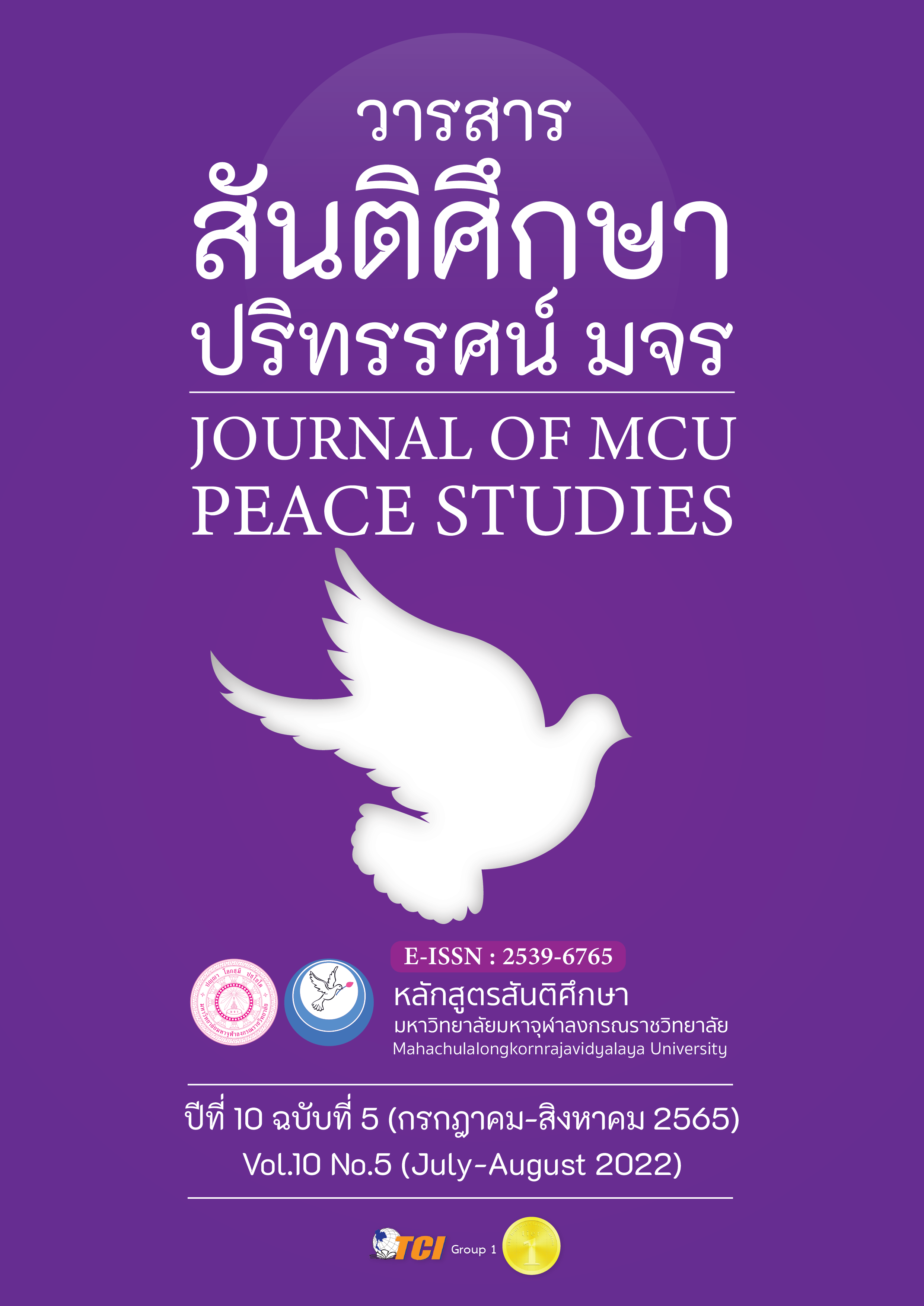การมีส่วนร่วมทางการเมืองของพลเมืองไทยในยุคดิจิทัล
Main Article Content
บทคัดย่อ
ความก้าวหน้าของการสื่อสารเทคโนโลยีดิจิทัลช่วยเพิ่มช่องทางในการดำเนินกิจกรรมทางการเมือง พลเมืองไทย ทำให้ทั้งพลเมืองสามารถติดตาม ตรวจสอบพฤติกรรมนักการเมือง กิจกรรมการบริหารประเทศของฝ่ายการเมืองได้ตลอดเวลา ในการศึกษาการใช้เทคโนโลยีดิจิทัลการสื่อสารในกิจกรรมการมีส่วนร่วมทางการเมืองของพลเมืองไทย พบว่าการมีส่วนร่วมทางการเมืองของประชาชนยังให้ความสำคัญกับรูปแบบกิจกรรมการเมืองแบบเดิมที่มีการรณรงค์หาเสียง การออกเสียงเลือกตั้ง การประกาศนโยบาย การร่วมกิจกรรมการเมืองฯลฯ มีสิ่งที่เปลี่ยนแปลงบ้างจากเดิมคือการใช้ประโยชน์จากเทคโนโลยีดิจิทัลในการสื่อสารกิจกรรมทางการมืองเพื่อให้ประชาชนสามารถรับรู้ข้อมูลข่าวสารทางการเมืองได้สะดวกทุกเวลาและทุกสถานที่ผ่านสื่อออนไลน์ รวมทั้งยังบันทึกเก็บข้อมูลกิจกรรมทางการเมืองไว้เป็นหลักฐานอ้างอิงได้นานสามารถสืบค้นและนำมาสื่อสารกันบนสื่อออนไลน์เมื่อต้องการจะใช้ประโยชน์ในทางการเมือง และกิจกรรมการมีส่วนร่วมทางการเมืองดิจิทัลมีตั้งแต่ลำดับต่ำของกลุ่มผู้เฝ้าดูอยู่ในระยะห่างไกลจากการเมือง จนถึงลำดับสูงสุดที่ใช้ข้อมูลดิจิทัลเคลื่อนไหวทางการเมืองเพื่อวัตถุประสงค์ชิงความได้เปรียบทางการเมือง ไม่เพียงเท่านี้การที่ประชาชนใช้เทคโนโลยีดิจิทัลดำเนินกิจกรรมการมีส่วนร่วมทางการเมืองมีส่วนช่วยทำให้การเมืองไทยพัฒนาความเป็นประชาธิปไตยที่สูงขึ้น รวมทั้งเป็นการส่งเสริมการกระจายอำนาจการเมืองการปกครองเป็นจริงได้ในทางพฤตินัย
Article Details

อนุญาตภายใต้เงื่อนไข Creative Commons Attribution-NonCommercial-NoDerivatives 4.0 International License.
ทัศนะและความคิดเห็นที่ปรากฏในบทความในวารสาร ถือเป็นความรับผิดชอบของผู้เขียนบทความนั้น และไม่ถือเป็นทัศนะและความรับผิดชอบของกองบรรณาธิการ ยินยอมว่าบทความเป็นลิขสิทธิ์ของวารสาร
เอกสารอ้างอิง
Adiwatthanasith, C., Sudsawas, S., & Rerkrujipimon, Ch. (2002). Sociology. (10th ed.). Bangkok: Thammasat University Press.
AT&T Business Editorial Team. (2018). 5 Ways 5G Will Transform Healthcare. Retrieved June 15, 2022, from https://www.business.att.com/learn/updates/how-5g-will-transform-the-healthcare-industry.html
Bennett, W. L., & Segerberg, A. (2012). The Logic of Connective Action - Digital Media and the Personalization of Contentious Politics. Information, Communication & Society, 15(5), 739–768.
Chiangkul, W. (2020). Direct Democracy in Classical Greece. Retrieved June 15, 2022, from https://www.bangkokbiznews.com/blog/detail/651649.
Easton, D. (1971). The Political System: An Inquiry into the State of Political Science. New York: Knoof.
Gibson, R., Greffet, F., & Cantijoch, M. (2017). Friend or Foe? Digital Technologies and the Changing Nature of Party Membership. Political Communication, 34(1), 89–111.
Kapook. (2013) Retracing the Communication Technology of the World. Since the Cave Paintings in the Stone Age to the Most Advanced Communication the Speed that Connects the Whole World Today. Retrieved June 16, 2022, from https://hilight.kapook.com/view/87986
Milbrath, L. W. (1965). Political Participation; How and why do people get involved in politics?. Chicago: Rand McNally political science series.
McCarthy, J. D., & Zald, M.N. (1973). The Trend of Social Movements in America: Professionalization and Resource Mobilization. Morristown, N.J.: General Learning Press.
National Health Commission Office (NHCO). (2019). Foreseeing the Future of Development in the Era of Globalization 4.0. Retrieved June 15, 2022, from https://infocenter.nationalhealth.or.th/node/27606
Norman, H. N., & Verba, S. (1975). Political Participation: in Handbook Political Sciences: Non-Government Politic Reading by Greentein, I. Fred and Nelson W. PoLs by. Reading. Mass: Addison-Wesley Pub. Co.
Orlikowski, W. J. (1996). Improvising Organizational Transformation Over Time: A Situated Change Perspective. Information Systems Research, 7(1), 63–92.
Orlikowski, W. J. (2002). Knowing in Practice: Enacting a Collective Capability in Distributed Organizing. Organization Science, 13(4), 249-273.
Prachayapruit, T. (2003). Administration: Meaning, Content. Guidelines and Problems. Bangkok: Chulalongkorn University Press.
Royal Academy Institute. (2011). Dictionary of Royal Academy Institute B.E. 2524. Bangkok: Royal Academy Institute.
Selander, L., & Sirkka, J. L. (2016). Digital Action Repertoires and Transforming a Social Movement Organization. MIS Quarterly, 40(2), 331-352.
Salge,C. A. D. L., & Karahanna, E. (2018). Protesting Corruption on Twitter: Is it a bot or is it a person?. Academy of Management Discoveries, 4(1), 32–49.


